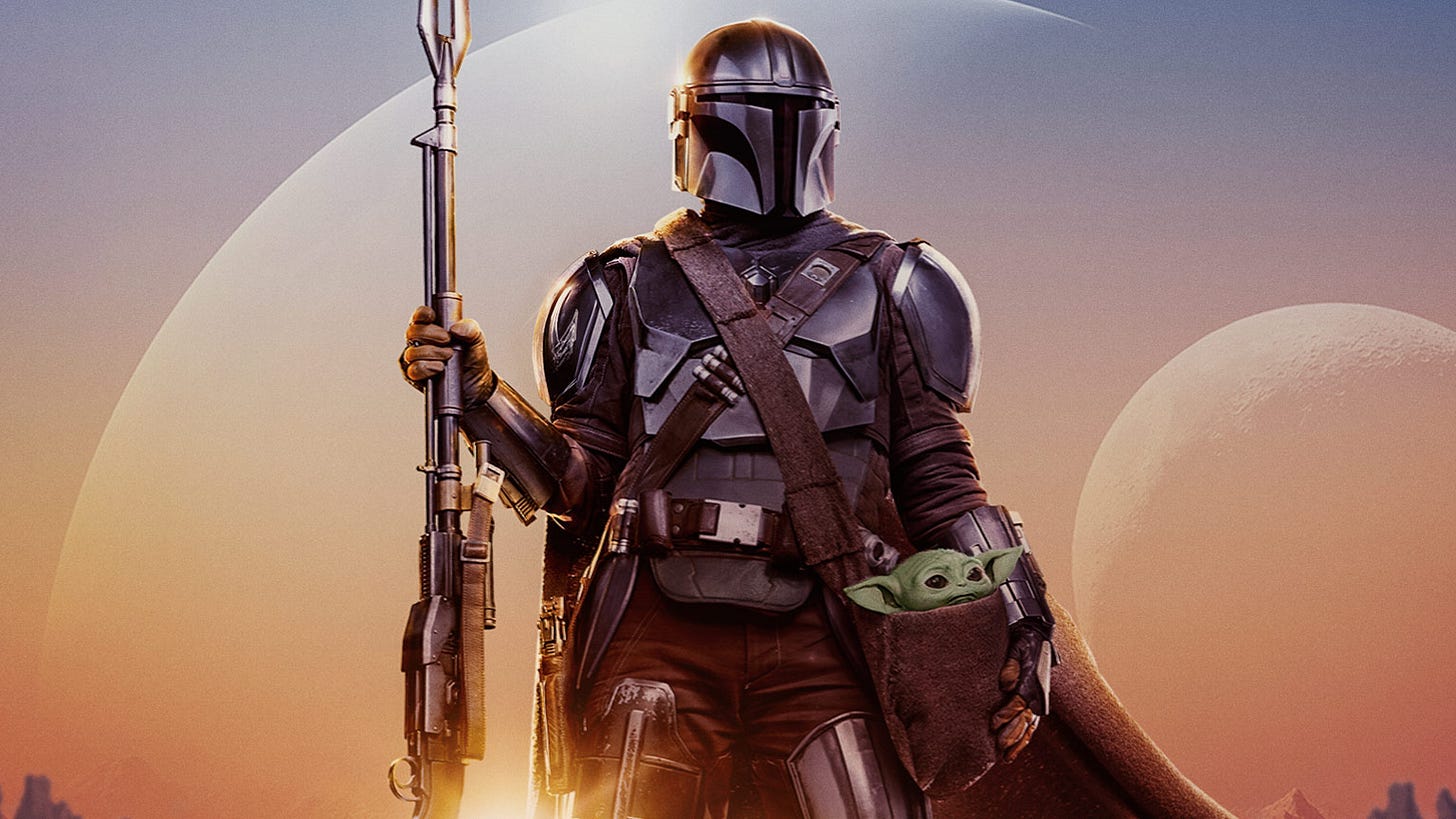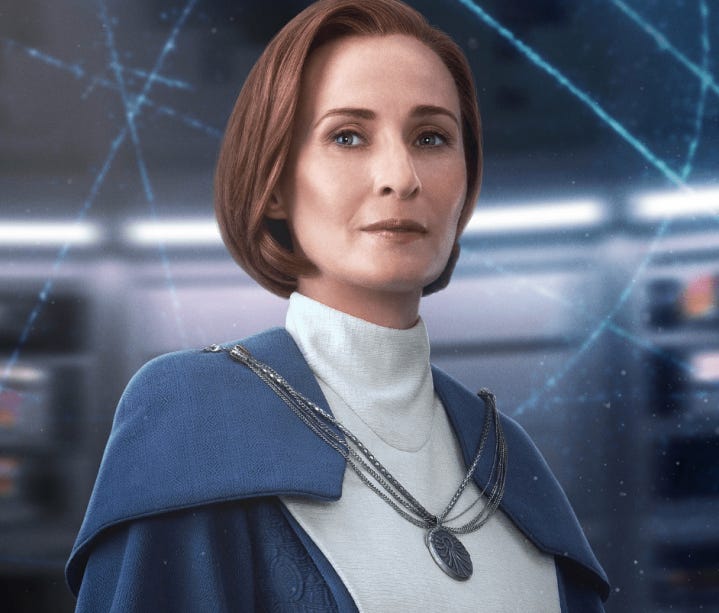From Andor to The Hunger Games: What comes after rebellion? | Essay
Yes, rebellion in the face of tyranny is important but so is considering how to build a better world afterwards. The question is, how do we do that?
Picture this. Scenes of triumph and jubilation across the galaxy. “Weesa free!” someone in the crowd shouts. The statue of a dictator is toppled alongside their tyrannical regime. War is over. Freedom at least. What now?
By the end of Return of The Jedi, as we celebrate the fall of the Empire and the death of the Emperor, the galaxy takes a collective breath and, for the first time in decades, is at peace. Or so it would seem. Those celebrations come to an end and the sun rises on a galaxy in mourning. Remnants of the Empire scatter like roaches, hiding and plotting in the shadows. Pirates take advantage of the political upheaval running riot across the galaxy. The rebellion has won but one question remains: what comes next?
The real work begins
From Star Wars to The Hunger Games, there are plenty of stories about the pain and hope and the loss and triumph of rebellion, but there are few stories about what comes after.
This week I published a story called ‘Strays’. The story starts not long after a rebellion has taken down a royal dynasty that has ruled for thousands of years and tracks a former tool of the regime who has gone into hiding following defeat.
Strays | Short Story
‘The War is just the beginning. Now we must fight to build something new.’ - from ‘The Declaration of Renewal’ by the Thousand Suns Confederation Council
With Strays, I was keen to start poking at the question I think it’s important we start asking of the stories we tell. If characters are to fight fascist governments and hope for freedom on the other side, what does that freedom look like? How do you build a system that will protect people and provide for them all without sliding into tyranny, the way that many governments are want to do?
Few dystopian stories grapple with these questions, instead focusing on the work of overthrowing these tyrannical governments. I want to be clear, stories of rebellion are important, but I would also argue that stories of what comes after rebellion are equally important.
Panem forever
Consider The Hunger Games. For five books Suzanne Collins has painted a picture of a miserable and oppressive world from which escape seems near impossible. In the latest entry in the series, Sunrise on the Reaping, Collins shows us how difficult it is to build a rebellion in the first place when you are very much the David going up against Goliath.
Enter Katniss, the spark that District 13 needed to ignite the rebellion that would finally bring down the Capitol. By the end of Mockingjay (spoilers!) the world is changed. President Snow is gone and so is his would-be successor and mirror image in District 13’s Coin. A hole is left in Panem, threatening to plunge an already scarred country into further chaos. And then the story ends.
As Bashirat Oladele noted in a Polygon essay on the death of the YA dystopia, “the stories always stopped right after the latest oppressive regime fell, as if that would solve all of society’s problems.” These stories, The Hunger Games included, paid little attention to the world that would come after such a rebellion. What system of government will they use and who will populate it? Is there any resistance from the classes who benefited from the previous regime? And what about reparations and justice for prior atrocities?
Oladele adds, “The stories of how these dystopic societies were rebuilt would be more novel and enticing, but there was never room in YA dystopias for that kind of thought or consideration.”
Now I get that The Hunger Games is the story of Katniss and her rebellion, but that doesn’t mean the story of that world couldn’t continue. Sure, Katniss deserves her ending, bittersweet though it is, but the new world of Panem is only just beginning.
That brings me back onto one of my favourite topics: Star Wars.
The New Republic
You’ve probably already guessed that the opening paragraph of this essay was describing the closing moments of Return of the Jedi, the best Star Wars movie. We see the galaxy celebrate as the Empire falls. The Emperor and Darth Vader are dead and, as Jar Jar says, “weesa free!”
And then it’s over. Credits roll. Good triumphs over evil. The end.
Or at least that is until Disney bought Lucasfilm back in 2012 and announced that we’d be getting a new trilogy of films set after George Lucas’ triumphant finale. And that trilogy, much like the one that preceded it, focuses on a resistance as it fights against the evil First Order before culminating in another celebratory victory for good over evil.
Now, this isn’t a criticism of the Sequel trilogy, I love those movies, but it is yet another example of a story focusing less on what comes after the rebellion.
Andor fills in the gap between Revenge of the Sith and A New Hope by showing how the rebellion formed and it’s some of the most urgent and powerful Star Wars writing we’ve ever seen. But it too is another example of a rebellion and not the rebuild.
Where Star Wars differs from other franchises like The Hunger Games is that, like all things in Star Wars, these stories of rebellion in Andor and the sequels are balanced out by the era known as The New Republic.
The Mandalorian, which launched with Disney+ back in 2019, is set a few years post Return of the Jedi. During this time we see that criminal syndicates and pirates and bounty hunters have taken advantage of the chaos created by the Empire’s demise. We also see elements of The New Republic as it attempts to bring the kind of peace and freedom the rebellion fought for to all the worlds of the galaxy.
Then, in Ahsoka, we see more of this new government as they struggle to agree on the best path forward all while contending with the threat of the Imperial Remnant, disparate groups of former Empire leaders who wish to resurrect the former Emperor.
This is what I’m talking about when I say we need more stories about what comes after. This era is ripe for a plethora of different stories. We’ve seen how the criminal underworld is affected by the fall of the Empire in The Mandalorian and how pirates have taken advantage of the chaos in the criminally underrated Skeleton Crew. We’ve seen how The New Republic is perceived as ineffectual by the people of the galaxy and we’ve been introduced to Grand Admiral Thrawn, the potential figure to unite the desperate strands of the Imperial Remnant.
Soon we’ll be getting a second season of Ahsoka which will further explore The New Republic and the growing conflict with Thrawn as well as a movie following The Mandalorian and Grogu. Crucially, these stories aren’t about rebellions overthrowing tyrannical governments but about the people fighting to build something new in the wake of war.
This era of Star Wars storytelling deepens those that preceded it by honouring the ideology that the rebellion fought for. Andor and Mon Mothma fight to overthrow the Empire so that they might have a chance to build something new. As Luthen Rael says in Andor season one, “I burn my decency for someone else’s future. I burn my life to make a sunrise that I know I’ll never see.” By showing what comes on that new day, we add another dimension to this sacrifice.
We can track Mon Mothma’s journey from senator in stories like Alexander Freed’s novel Reign of the Empire: The Mask of Fear to rebellion leader in Andor and Rogue One, and finally to leader of The New Republic in Ahsoka. This through line is important for audiences as it conveys the journey from fighting to break an oppressive system to working to build something better.
When you’ve got an audience of young people, especially young people who are living in the world full of cruelty and conflict, it is important for art to offer us potential pathways to a better world. Rebellions are great, but what comes after? Star Trek’s post scarcity future is great, but how do we get there?
As Oladele says, “They all built momentum and excitement around action, but few of these stories ever considered what young-adult readers want to know: After one cruel leader is gone, what comes next?”
Strays is the first story in a much larger planned universe, with each short story, serial and novel attempting to build out a picture of what it means to build something after a rebellion. I want to tell the stories of those who wake up the morning after the celebrations and get to work building a better future. I want to tell the story of what comes after.
There you have it, folks. What do you think. Sound off in the comments if you’ve got any good examples of stories set post-revolution.







